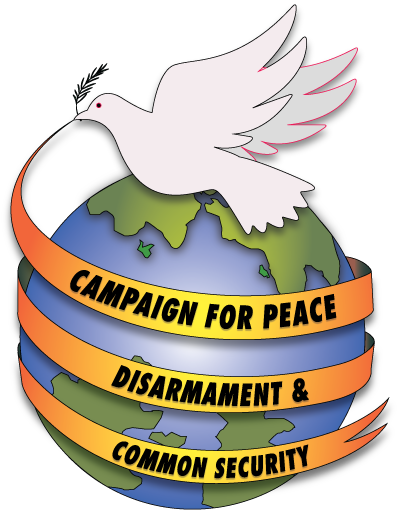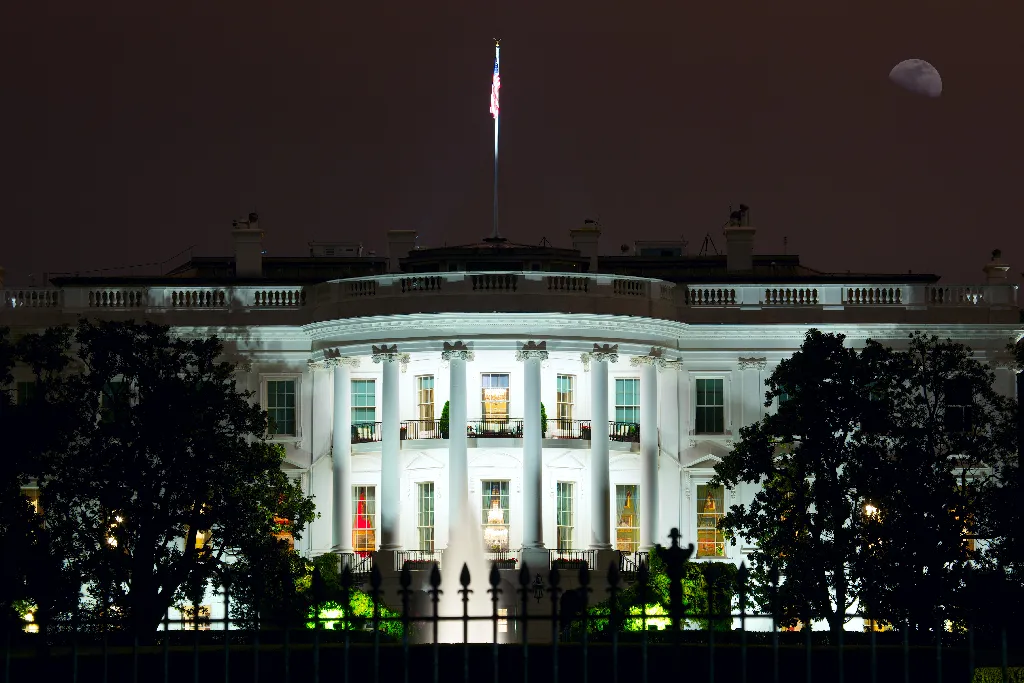The summit’s much ballyhooed commitment to nuclear disarmament and nonproliferation serves more to manufacture consent for preparations for nuclear war than to reduce nuclear dangers.
Meeting in a summit at Camp David on August 18, President Joe Biden, President Yoon Suk Yeol of South Korea, and Prime Minister Fumio Kishida of Japan posed for photos that confirmed and broadcast a long-term trilateral alliance designed to reinforce containment of China, Russia, and North Korea.
The architect of this updated alliance structure was the coordinator for Indo-Pacific affairs in President Biden’s National Security Council, Kurt Campbell. In an earlier incarnation, he served as former President Barack Obama’s assistant secretary of state for East Asian and Pacific affairs who then led the greatest U.S. post-Cold War foreign and military transition: the pivot to Asia and the Pacific to contain and manage China’s rise. Now as he has nurtured the consolidation of the U.S.-Japan-South Korea military alliance to reinforce the pivot and to augment the AUKUS (Australia, British-U.S.) and QUAD (U.S., Japan, Australia, India) alliances in Washington’s long march to create a NATO-like Indo-Pacific alliance system. TheNew York Timesheadlined that the three-pact way will serve as a “bulwark” against China and North Korea.
Prior to the summit, Campbell announced that the August 18 summit would feature “a very ambitious set of initiatives that seek to lock in trilateral engagement, both now and into the future,” addressing “many sectors—in the security realm, in technology, and education.” In this regard, it should be recalled that the Biden National Security strategy recognizes that the U.S. cannot unilaterally maintain its global dominance, and that doing so requires alliances that integrate military, technological, and economic resources. And while there is anything but equality among the alliance partners, Japanese and South Korean elites enjoy influence and power they would not have on their own.
With these military systems in place and the almost daily provocative military “exercises” by all parties involved, an accident or miscalculation on the Korean Peninsula or in relation to Taiwan could easily escalate into a regional, even nuclear, war.
Little understood across the United States, there are two competing triangular military, economic, and technological pacts in Northeast Asia. These contending military systems, plus the Taiwan and Korean flash points, make the region, along with Ukraine, the most likely trigger for escalation to regional, and potentially nuclear, war. Each of these increasingly integrated triangular systems, the U.S.-Japan-Republic of Korea (ROK) alliance and the China-Russia-Democratic People’s Republic of Korea (DPRK) quasi alliance, has its fault lines. With Japan yet to fully face and apologize for its brutal history of colonial conquest and rule in Korea (think forced labor and systemic military prostitution in the first half of the 20th century), and with widespread resentment over unpopular ROK president Yoon’s kowtowing to Tokyo and Washington, not to mention Seoul being Beijing’s second largest national trade partner, South Korea is the weak link in the U.S.-led alliance. On the other side, as we see in the Ukraine War, Beijing’s commitment to Moscow is not “unlimited.”
As referenced above, with these military systems in place and the almost daily provocative military “exercises” by all parties involved, an accident or miscalculation on the Korean Peninsula or in relation to Taiwan could easily escalate into a regional, even nuclear, war.
Global and domestic political forces led to transforming what was long a hub (U.S.) and spokes (allied partners) alliance system to the more integrated system it is becoming. At its heart lies the Biden Administration’s National Security Strategy’s dictat that “the post-Cold War era is definitively over, and a competition is underway between the major powers to shape what comes next.” Second are fears that Russia’s invasion of Ukraine could signal an end to the post World War II/United Nations order in which national boundaries and sovereignty are for the most part respected. (The U.S. invasions of Indochina, Afghanistan, Iraq, and Panama being significant exceptions to the so-called “rules based order!”)
The alliance consolidation also takes place at a time when the Kishida government has opted to totally disregard Japan’s war-renouncing constitution. Being the world’s 10th largest military spender was not sufficient for those who fear China’s rise and North Korea’s missiles and wanted to restore Japan’s military grandeur. Kishida has committed to doubling the Self-Defense Forces budget. In harmony with U.S. alliance building, and to prepare for a time when the U.S. may reduce its Asia-Pacific commitments, Japan is deepening “security” cooperation with Australia, the Philippines, India, and Taiwan and is engaging in joint military operations as far afield as the South China Sea. That these commitments suggest the possible reprising of Tokyo’s early 20th century history as a major regional military power unsettles Beijing and some Asia-Pacific neighbors.
In Korea, the unpopular President Yoon is ruling in the tradition of Donald Trump, ignoring popular opinion, relying on his narrow but loyal right-wing base, and trading his threats to develop nuclear weapons and swallowing unresolved Japanese abuses to deepen U.S. and Japanese alliance commitments. With North Korea augmenting its nuclear arsenal and increasing the pace of its missile tests—even as the U.N. reports increased starvation in the DPRK—Seoul is hardly alone in accelerating the pace of Korean militarization. Add to this the joint Chinese-Russian naval exercises in the Sea of Japan and Asahi Shimbun’s reports that Beijing is tightening its military encirclement of Taiwan.
Among the trilateral agreements just secured at Camp David are the “commitment to consult” when “something that poses a threat to any one of us poses a threat” to the three nations—just short of NATO’s Article 5 commitment to mutual defense. Also agreed were greater intelligence sharing, annual military exercises, deepening cooperation and interdependence on missile defenses (which can provide defense but also serve as shields to reinforce first-strike nuclear swords), collaborative technological development, a framework to further integrate Southeast Asian nations into the trilateral military structure, a hotline, and annual trilateral meetings among national security advisors for “institutionalizing, deepening, and thickening the habits of cooperation” among the allies.
Decades ago, many of us sang, “When will they ever learn?” When indeed!
The summit’s much ballyhooed commitment to nuclear disarmament and nonproliferation serves more to manufacture consent for preparations for nuclear war than to reduce nuclear dangers. As we saw in the recent G7 summit, the U.S. and Japan remain committed to “nuclear deterrence.” And the nonproliferation commitment may have more to do with preventing South Korea’s and Japan’s military from becoming nuclear powers than a commitment to fulfilling their Nuclear Non-Proliferation Treaty (NPT) commitments. (Article VI of the NPT requires the original nuclear powers to engage in good faith negotiations for the complete elimination of their nuclear arsenals, which they have refused to do for 50 years. And, for 60 years, Japan’s military has asserted its right to possess nuclear weapons, and South Korean polls indicate that a majority support Seoul developing nuclear weapons.)
Decades ago, many of us sang, “When will they ever learn?” When indeed! Former Australian Prime Minister, now ambassador to the United States, Kevin Rudd, warns that we are marching toward a catastrophic and avoidable war. At the height of the last Cold War, U.S., Soviet, and European elites opted for the paradigm of Common Security diplomacy to halt and reverse the spiraling and increasingly terrifying nuclear arms race. They ended the Cold War on the basis of the recognition that security cannot be achieved by taking increasingly militarized actions against their rival, that it can only be won through difficult diplomacy that acknowledges each side’s fears and resolves and addresses them with win-win, mutually beneficial compromises and agreements.
Earlier this summer Treasury Secretary Janet Yellen observed that the world is big enough for both the U.S. and China. Let’s build on that insight, press U.S. and other leaders to engage in Common Security diplomacy, and stop wasting trillions of dollars in preparation for apocalyptic war and devote our all too limited resources to meeting human needs, including reversing that other existential threat: the climate emergency.
An earlier version of this article said that Kurt Campbell served as assistant secretary of state for East Asian and Pacific affairs under former President Bill Clinton. He actually filled this role under former President Barack Obama, and the piece has been corrected to reflect this.
Originally posted on: https://www.commondreams.org/opinion/trilateral-camp-david-summit

